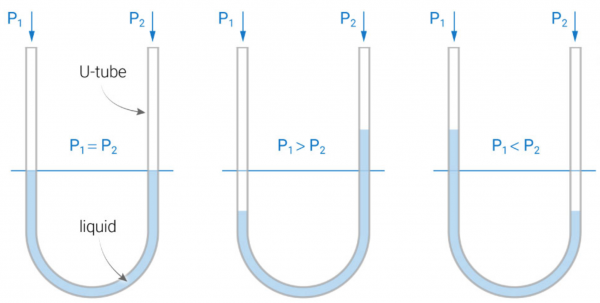Ch5 Lec 1
Solutions Review...watch this "Crash Course" video (don't worry about taking notes).
Chapter 5: Gases
Section 5.1: Substances that exist as gases
- READ Intro and this section
Take home points:
- - Air is 78% N2, 21% O2, 1 % other
- - Many elements exists as gases, H2, N2, O2, halogens and the noble gases.
- - There are other molecular substances that exist as gases, HCl, CO, CO2, NH3 (ammonia), CH4 (methane), NO2, SO2, H2S.
- - Gases:
- - fill the volume of space that exist in,
- - are compressible,
- - when 2 gases are mixed, they will mix together to make a homogenous mixture,
- - have a density (g/mL), but much lower than a solid or liquid.
Section 5.2: Pressure of a gas
READ this section...
Additional comments:
You do not often acknowledge the fact that you currently have a column of gas/air sitting on the top of your head. This column of air exerts a pressure (a force per area) on your head and shoulders. Now this amount of pressure exerted by air is quite smaller compared to the pressure exerted on your hips and knees by your upper body mass, but none the less the column of air above you exerts pressure. This is an interesting demo that i sometime do in class:
Units of gas pressure
The most common gas pressure unit is a Pascal (Pa), but most of you are more familiar with an "atmosphere" (atm). A Pa is equal to 1 Newton of force/1 square meter. The column of air stilling on top of your head right now is exerting ~ 1 atm or 101,325 Pa. Apparently a Pa is a very small unit, so we often use kiloPascals (kPa) and not Pa.
- 1 atm = ~ 101 kPa
Additionally, we use other units for pressure as well that are based on a physical observation. If you had a u-shaped tube and the same pressure was exerted on both sides, then the liquid level inside the tube would be the same (left). If the pressure on the left-side of the tube was greater than the pressure on the right-side of the tube, then the liquid level on the left side of the tube would be lower than the right side. If the pressure on the left-side of the tube was less than the pressure on the right-side of the tube, then the liquid level on the left side of the tube would be higher than the right side. The difference between the level of liquid in the tubes in inches or centimeter is also a measure of pressure. When the liquid is water, then the pressure unit would be "inches of water," or inH2O. If the liquid was mercury (more common), then it might be in mm (millimeters) of mercury, or mmHg.
1 atm = 760 mmHg
We also use psi (pounds per square inch) and bar. So unit conversions are are often necessary.
Another fun set of demos/discussion about air pressure:
Please visit WebAssign for a new assignment...HW5.1 spring 2020 (units/pressure).
Section 5.3: The Gas Laws
- Will cover in Mon lecture and lab discussion...
Section 5.4: The ideal gas law equation
- Will cover on Weds and in lab discussion...
Section 5.5: Gas Stoichiometry
- SKIP (not on exam)
Section 5.6: Dalton's law of partial pressures
- SKIP (not on exam)
Section 5.7: The kinetic Molecular theory of gases
- SKIP (not on exam)
Section 5.8: Deviation from ideal behavior
- SKIP (not on exam)
